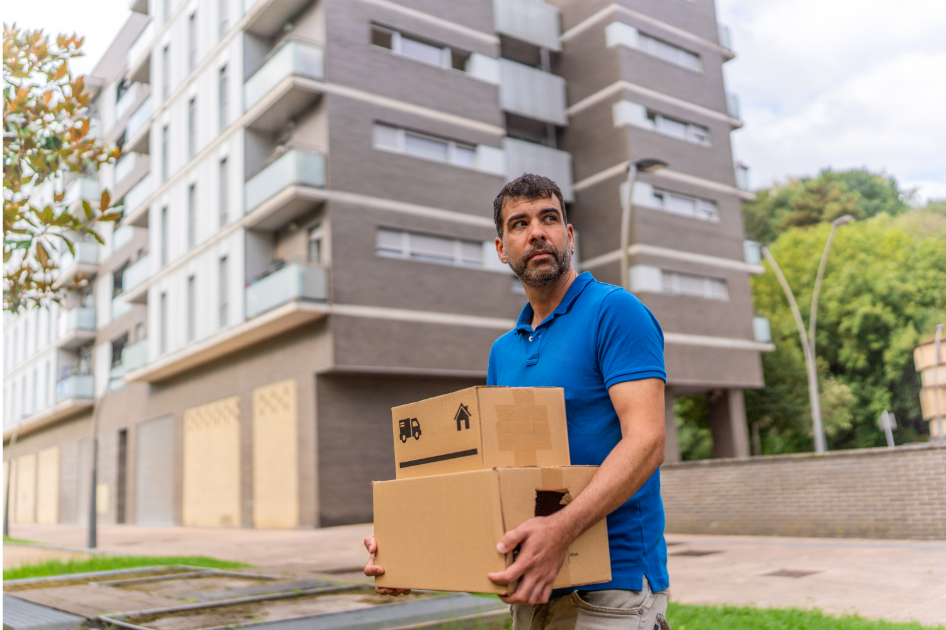A guy planted potatoes in an Amazon box as an experiment. Even he was surprised what happened.
You should see how many potatoes he got out of this experiment.
Can you grow vegetables in a cardboard box?
In the era of supermarkets and wholesale clubs, growing your own food isn't a necessity for most Americans. But that doesn't mean it's not a good idea to try.
A household garden can be a great way to reduce your grocery bill and increase your intake of nutrient-dense foods. It can also be a good source of exercise and a hobby that gets you outside in the sunshine and fresh air more often. However, not everyone has a yard where they can grow a garden or much outdoor space at all where they live. You can plant things in containers, but that requires some upfront investment in planters.

Or does it? Gardener James Prigioni set out to see if an Amazon shipping box would hold up as a planter for potatoes. He took a basic single-walled Amazon box, lined it with dried leaves to help with moisture retention, added four to five inches of soil (his own homegrown soil he makes), added three dark red seed potatoes, covered them with more soil, added a fertilizer, then watered them.
He also planted a second, smaller Amazon box with two white seed potatoes, following the same steps.
Two weeks later, he had potato plants sprouting. Ten days after that, the boxes were filled with lush plants.
- YouTube youtu.be
Prigioni explained how to "hill" potato plants when they grow tall enough, which helps encourage more tuber growth and protect the growing potatoes from sunlight. Hilling also helps support the plants as they grow taller so they don't flop over. He also added some mulch to help keep the plants cooler as the summer grew hotter.
After hilling, Prigioni only needed to keep up with watering. Both varieties of potatoes flowered, which let him know the tubers were forming. The red potato leaves developed some pest issues, but not bad enough to need intervention, while the white potato plants were unaffected. "It goes to show how variety selection can make a big difference in the garden," he explained.
The visible plants have to start dying before you harvest potatoes, and Prigioni checked in with the boxes themselves when they got to that point.

"I am pleasantly surprised with how well the boxes held up," he said, especially for being single-walled boxes. The smaller box was completely intact, while the larger box had begun to split in one corner but not enough to affect the plants' growth. "This thing was completely free to grow in, so you can't beat that," he pointed out.
Prigioni predicted that the red potatoes grown in the larger box would be more productive. As he cut open the box and pulled potatoes out, they just kept coming, ultimately yielding several dozen potatoes of various sizes. The smaller box did have a smaller yield, but still impressive just from two potatoes planted in an Amazon box.
People often think they don't have room to grow their own food, which is why Prigioni put these potato boxes on his patio. "A lot of people have an area like this," he said.
"I will never look at cardboard boxes the same," Prigioni added. "There are so many uses for them in the garden and it's just a great free resource we have around, especially if you're ordering stuff from Amazon all the time."

People loved watching Prigioni's experiment and shared their own joy—and success—in growing potatoes in a similar fashion:
"I have been growing potatoes in every box I can find for several years now. I have had excellent success. I honestly think potatoes prefer cardboard. And yes, most of my boxes were from Amazon."
"I live in an upstairs apartment with a little deck and I have a container garden with containers on every single stair leading to the deck. I grow potatoes in a laundry basket. It's amazing how much food I can get from this type of garden!! Grateful."
"I literally got up and grabbed the empty boxes by our front door, the potatoes that have started to sprout, and soil i had inside and started my planting at 1am. Lol. I will take them outside today and finish. Thank you James!"
"I grew potatoes and tomatoes on my tiny balcony in Germany (in buckets and cardboard boxes). Now I have a big garden here in America. I so love to grow my own food."
"I grew sweet potatoes in cardboard boxes. It’s so much fun."
Prigioni also recently planted the seeds from a tomato he found on his Burger King Whopper, in another fascinating experiment:
- YouTube www.youtube.com
Next time you're stuck with an Amazon box that you don't have a use for, consider whether you could use it as a planter for potatoes or some other edible harvest. Gardening doesn't have to be fancy to be effective.
You can find more of gardening experiments on The Gardening Channel with James Prigioni.
This article originally appeared in April. It has been updated.
